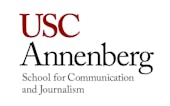Joe Saltzman is Professor of Journalism and Communications and the Director of the Image of the Journalist in Popular Culture (IJPC) (www.ijpc.org), a project of the Norman Lear Center at the University of Southern California's Annenberg School for Communication and Journalism.
Saltzman is the author of "Frank Capra and the Image of the Journalist in American Film," and is the former associate dean at the Annenberg School. He is the co-author of the book "Heroes and Scoundrels: The Image of the Journalist in Popular Culture" (University of Illinois Press, 2015), written with Matthew C. Ehrlich.
Saltzman received his B.A. in journalism from the University of Southern California and his M.S. from the Columbia University Graduate School of Journalism. After working for several years as a newspaper reporter and editor, Saltzman joined CBS television in Los Angeles in 1964 ending up as the senior CBS producer for the five owned-and-operated CBS stations. For the next ten years, produced documentaries, news magazine shows, and daily news shows, winning more than fifty awards including the Columbia University-duPont broadcast journalism award (the broadcasting equivalent of the Pulitzer Prize), four Emmys, four Golden Mikes, two Edward R. Murrow Awards, a Silver Gavel, and one of the first NAACP Image awards.
Saltzman was among the first broadcast documentarians to produce, write and report on important social issues, including Black on Black, a historic ninety-minute program with no written narration on what it is like to be an African-American in urban America in 1967, acknowledged to be the first documentary of its kind on television; Rape, a 30-minute 1970 program on the crime, the first documentary on the subject for television, which resulted in changes in California law and received the highest rating for a documentary in Los Angeles history; The Unhappy Hunting Ground, a 90-minute documentary on the urbanization of Native Americans, one of the few documentaries ever made on the subject; The Very Personal Death of Elizabeth Holt-Hartford, a 30-minute program on what is like to get old in America, The Junior High School (Part One, “Heaven Hell or Purgatory” and Part Two, “From ‘A’ to Zoo”), a two-hour program on education in America in 1970, said by one critic to be the “best documentary ever made on education in America”; and Why Me? acknowledged to be the first documentary on breast cancer in 1974 that resulted in thousands of lives being saved and advocated changes in the treatment of breast cancer in America. All are available on Youtube by clicking the titles. DVDs or Mp4 copies of the Saltzman documentaries are now available. He was also producer of one of the first news magazines on television, Ralph Story's Los Angeles.
In 1974, he created the broadcasting sequence in the USC School of Journalism. During his tenure at USC, Saltzman, who has won three teaching awards, has remained an active journalist producing medical documentaries, functioning as a senior investigative producer for Entertainment Tonight, and writing articles, reviews, columns and opinion pieces for hundreds of magazines and newspapers. He has been researching the image of the journalist in popular culture for nearly two decades years and is considered a worldwide expert in the field.
The image of the journalist in popular culture is a gold mine of research possibilities. The Image of the Journalist in Popular Culture (IJPC), a project of the Norman Lear Center in the Annenberg School for Communication and Journalism at the University of Southern California, was created in 2000 to investigate and analyze, through research and publication, the conflicting images of the journalist in film, television, radio, fiction (novels, short stories, plays poems), cartoons, comic strips, comic books, commercials and other forms of popular culture to demonstrate their impact on the public’s perception of journalists (www.ijpc.org).
Saltzman pioneered this long-neglected, new field of research rich with untapped material. To help those who want to work in this academic field, the Image of the Journalist in Popular Culture Project has created three major resources: The IJPC Website (www.ijpc.org), the online IJPC Database with more than 89,000 entries, and the peer-review The IJPC Journal, all worldwide sources for the subject. He has been researching the image of the journalist in popular culture for twenty years and is considered one of the leading experts in the field. Saltzman is co-founding editor of the peer-review The IJPC Journal and creator of the IJPC website and the IJPC Database.
Saltzman, who was awarded the 2005 Journalism Alumni Award from the Columbia University Graduate School of Journalism, the Alumni Association’s highest alumni honor, was named the 2010 national Journalism and Mass Communication Teacher of the Year by the Scripps Howard Foundation. The Scripps Howard Foundation’s National Journalism Awards are considered among the most prestigious awards in American journalism. He received a $10,000 cash prize and the Charles E. Scripps Award at the keynote session during the Association for Education in Journalism and Mass Communication convention in St. Louis in August 2010. He also was recognized at the Scripps Howard Foundation’s National Journalism Awards dinner in Cincinnati in May. 2010.
Conversation Video: Do Journalists Get a Bad Rap in Pop Culture?
https://www.youtube.com/watch?v=uXCmGgAWjEw
Experience
-
–presentProfessor of Journalism , University of Southern California
Honours
Was named the 2010 national Journalism and Mass Communication Teacher of the Year by the Scripps Howard Foundation.The Columbia University-duPont broadcast journalism award (the broadcasting equivalent of the Pulitzer Prize), four Emmys, four Golden Mikes, two Edward R. Murrow Awards, a Silver Gavel, and one of the first NAACP Image awards. The 2005 Journalism Alumni Award from the Columbia University Graduate School of Journalism, the Alumni Association’s highest alumni honor.



